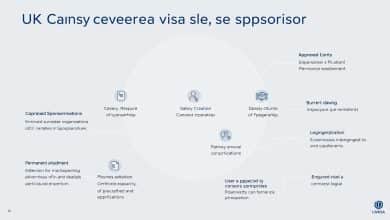USA Marriage Visas (CR1/IR1 vs K-1): Timelines, Forms & Evidence Checklist — A Complete Step-by-Step Guide
Bringing a spouse or fiancé to the United States is a significant step for many citizens.
The immigration process offers specific pathways designed for family reunification. Understanding these options is the first crucial step toward a successful application.
This comprehensive guide provides essential information on the two main visa categories. For couples already married abroad, the CR1/IR1 immigrant visa leads directly to permanent residence. For those planning to wed in the U.S., the K-1 fiancé visa is the nonimmigrant alternative.
We will break down the eligibility, required forms, and supporting evidence for each path. The goal is to help every citizen make an informed decision that best suits their personal circumstances and leads to a life together in the United States.
Overview of USA Marriage Visas: CR1/IR1 vs. K-1
The choice between different family-based immigration categories significantly impacts a couple’s timeline and legal status. Each pathway offers distinct advantages depending on individual circumstances.
Understanding the Visa Categories
Two primary routes exist for couples. The CR1 and IR1 categories provide immediate permanent residence upon entry. The key difference lies in the marriage duration.
A CR1 visa applies when the union is under two years. This results in a conditional green card. The IR1 option is for marriages lasting two years or more.
The K-1 fiancé category serves couples planning to wed in the United States. This nonimmigrant option requires marriage within 90 days of arrival.
Key Differences in Visa Types
Processing times and work authorization vary considerably between pathways. The CR1/IR1 route grants immediate permission to work. The K-1 process involves additional steps after marriage.
Lawful permanent residents have different options than U.S. citizens. They cannot petition for a K-1 visa. The CR1 remains their sole pathway for bringing a spouse.
Several reasons might lead couples to choose one category over another. These include wedding location preferences and desired timeline for reunification. Each situation requires careful evaluation.
Eligibility and Required Evidence
The evidence requirements for spousal immigration petitions demand careful preparation and thorough documentation. Applicants must demonstrate both relationship authenticity and financial capability to meet immigration standards.
Marriage Validity Documentation
Proving a genuine relationship begins with legal marriage certificates from the country where the ceremony occurred. This official document serves as the foundation for the entire application process.
Additional evidence should demonstrate ongoing commitment between partners. Joint financial accounts, shared household expenses, and family photographs create a compelling picture of authentic partnership.
For couples with previous unions, complete termination records are essential. Divorce decrees or death certificates from former spouses must accompany the petition.
Financial Support and Affidavit Requirements
The affidavit of support represents a critical financial commitment. Petitioners must prove income at least 125% above federal poverty guidelines.
This requirement ensures the immigrant will not become a public charge. Financial documentation includes tax returns, employment verification, and asset statements.
Understanding these requirements early helps couples gather proper documentation. Thorough preparation strengthens each case and reduces processing delays.
Filing the Initial Petition and Key Forms
Submitting the correct government forms marks the official beginning of the family immigration process. This critical step requires careful attention to detail and proper documentation.
The selection between different petition types depends on each couple’s specific situation. Understanding which form to file ensures a smoother application journey.
Overview of Form I-130 and Form I-129F
Form I-130 serves as the foundational petition for married couples. U.S. citizens or lawful permanent residents must submit this form to establish their relationship validity.
The I-130 requires comprehensive supporting evidence. This includes proof of citizenship, marriage certificates, and relationship documentation.
For engaged couples planning to wed in the United States, Form I-129F is the appropriate choice. This petition establishes eligibility for the fiancé category.
Both forms demand accurate completion and thorough supporting materials. Errors can lead to processing delays or petition denials.
After submission, applicants receive a receipt notice with their case number. This allows tracking throughout the adjudication process.
Navigating the Visa Interview Process
The interview stage represents the final hurdle in the immigration journey for couples seeking reunification. This critical step determines the outcome of the entire application process.
After USCIS approval, cases transfer to the National Visa Center for document collection and interview scheduling. Proper preparation during this phase is essential for success.
Preparing for the NVC and Consular Interview
The NVC assigns a case number and provides specific instructions. Applicants must complete several forms and gather extensive documentation.
Key requirements include:
- Form DS-260 with detailed biographical information
- Valid passport and recent photographs
- Civil documents like birth certificates and police records
- Completed medical examination from approved physicians
Organizing all materials in advance saves considerable time. Having original documents readily available prevents delays.
What to Expect During the Interview
Consular officers conduct interviews to assess relationship authenticity. They look for consistent information and genuine details.
Typical questions cover:
- How the couple met and relationship history
- Daily routines and future plans together
- Wedding details and family interactions
Applicants should arrive early with all required paperwork. The process includes fingerprint scanning before the questioning begins. Honest, natural responses demonstrate a bona fide relationship to the officer.
After the interview, applicants receive immediate notification of the decision. Approved cases typically receive passport stamps within two weeks.
Timelines and Processing Milestones
Understanding the sequential stages of processing helps applicants navigate the complex journey toward permanent residence. Each pathway follows distinct checkpoints with varying durations that affect reunion planning.
The overall time from petition submission to receiving permanent residence typically spans approximately 18 months. However, several factors can influence this timeframe significantly.
Understanding Processing Timeframes
The immigration journey consists of multiple phases. USCIS petition approval generally requires 10-15 months, followed by National Visa Center processing for 2-4 months.
Consular interview scheduling adds another 1-2 months to the timeline. After entry, physical document production takes 2-3 weeks.
Fiancé category processing often completes faster than spousal routes. The K-1 pathway averages 9-12 months from filing to visa issuance.
Couples should note the conditional residence requirement. When a union exists for less than two years at approval, conditional status applies.
This requires filing Form I-751 within 90 days before the second anniversary. Proper timing ensures continuous lawful status.
Applicants can monitor progress through online systems using their case number. Regular checks help anticipate next steps in the process.
After entering the country, new residents should expect their physical card within 120 days. Delays beyond this period warrant contacting immigration authorities.
USA marriage visa: Tips and Best Practices
Careful preparation separates successful immigration applications from those facing unnecessary delays. Following proven strategies helps couples navigate the complex requirements with confidence.
Optimizing Your Application Process
Thorough preparation begins with understanding who can file petitions. Only the U.S. citizen can initiate the process for their partner.
Common errors that slow down processing include:
- Incomplete forms with missing signatures or dates
- Inconsistent information across different documents
- Insufficient evidence demonstrating genuine relationships
- Missing translations for foreign-language documents
Organization is crucial throughout the entire journey. Maintain digital and physical copies of all submitted materials.
Address changes require immediate attention using Form AR-11. This ensures important documents like green cards reach the correct location.
Employment authorization options exist for certain nonimmigrant categories. Understanding these rights helps with financial planning after arrival.
Working with qualified professionals or following official instructions carefully reduces risks. Prompt responses to requests for additional information keep cases moving forward efficiently.
Understanding the Green Card Adjustment of Status Process
Geographic location plays a crucial role in determining the appropriate process for green card acquisition. Foreign nationals have two distinct pathways to achieve permanent residency status.
The choice between these routes depends on where the applicant currently resides. Each method leads to the same outcome but follows different procedural steps.
Adjustment vs. Consular Processing Explained
Adjustment of status applies to individuals already physically present in the country. They submit Form I-485 to transition to permanent resident status without leaving.
This process allows applicants to remain in the United States throughout the entire procedure. Key benefits include the ability to file forms concurrently and maintain continuous presence.
Consular processing serves applicants living outside the country. They complete the immigrant visa process through overseas embassies or consulates.
After approval, they receive a visa stamp enabling entry as new lawful permanent residents. The physical document arrives by mail after paying required fees.
Both pathways ultimately grant the right to live and work permanently anywhere in the nation. The decision depends on current location and specific circumstances.
Cost Considerations and Fee Breakdown
Financial planning is a critical component of the immigration journey that many couples underestimate. Understanding the complete fee structure helps applicants budget effectively and avoid unexpected financial hurdles.
The total government filing fees vary significantly between different pathways. For spousal immigration, the combined charges total approximately $1,080. This includes the Form I-130 petition fee, immigrant application charge, and green card production cost.
Mandatory Filing Fees and Government Charges
The fiancé category involves a more complex fee structure totaling around $2,655. This covers multiple stages including petition filing, visa processing, and adjustment of status after wedding ceremonies.
Medical examination costs represent another mandatory expense. These typically range from $200 to $500 per person depending on location and required vaccinations.
Additional Expenses and Hidden Costs
Document preparation creates additional financial considerations. Certified translations, passport photos, and certified copies of civil documents all contribute to the overall budget.
Travel expenses for interviews and biometric appointments can accumulate quickly. Couples should also budget for international shipping of application materials using trackable services.
The Form I-864 affidavit of support requires no direct filing fee. However, gathering the necessary financial documentation may involve indirect costs. Some petitioners need joint sponsors if they cannot meet income requirements independently.
Payment methods vary across different government agencies. Some accept personal checks while others require electronic payments. The green card fee must be paid online before document production begins.
Case Studies and Common Challenges
Couples often encounter unexpected obstacles that test their patience and preparation throughout the application journey. These real-world scenarios highlight patterns where documentation and procedural hurdles create significant delays.
Real Applicant Experiences
Many partners face authentication issues with foreign documents. Some countries issue certificates in formats not immediately recognized by immigration authorities.
Couples with limited in-person time struggle to demonstrate genuine relationships. They must provide extensive evidence beyond photos and financial records.
Criminal history or prior immigration violations create additional scrutiny. Certain convictions may require waivers or comprehensive rehabilitation documentation.
Strategies for Overcoming Obstacles
Proactive evidence gathering includes diverse documentation types. Travel itineraries, sworn statements, and detailed personal narratives strengthen applications.
Using certified translation services prevents language barrier issues. Qualified interpreters ensure accurate communication during interviews.
Maintaining lawful status while waiting prevents application jeopardization. Prompt responses to evidence requests keep cases moving forward efficiently.
How Immigration Experts Can Assist You
Expert legal assistance can transform a challenging immigration journey into a manageable process. Many couples find that professional guidance provides clarity and confidence throughout complex procedures.
Specialized attorneys bring deep knowledge of family-based immigration law. They help applicants understand their options and make informed decisions.
Benefits of Expert Consultation
Professional consultation proves particularly valuable for complicated cases. These include prior denials, criminal history issues, or extended unlawful presence.
Attorneys identify potential problems before they become major obstacles. They advise on the strongest approach for documenting genuine relationships.
Legal experts prepare comprehensive petition packages with accurate forms. This reduces the likelihood of requests for additional evidence that delay processing.
Representation provides peace of mind throughout the application process. Professionals monitor case progress and communicate with government agencies.
The investment in expert help often proves cost-effective compared to potential errors. Denied applications result in lost fees and extended family separation.
Conclusion
This guide illuminates the path to family reunification, providing clarity on the complex steps toward permanent residency. Choosing between the CR1/IR1 and K-1 pathways is the first critical decision for couples.
The journey involves meticulous preparation, from filing the initial petition to the final interview. Understanding timelines and financial requirements helps manage expectations throughout the multi-stage process.
Success hinges on demonstrating a genuine relationship and meeting all legal obligations. The ultimate reward is building a life together in the United States as a lawful permanent resident.
For more information, explore the official visa website mentioned in this article:
You will be redirected to another website
FAQ
What is the main difference between a CR1/IR1 visa and a K-1 fiancé(e) visa?
The primary distinction lies in the marital status of the couple at the time of application. A K-1 visa is for a fiancé(e) to enter the United States to get married, after which they apply for a green card. A CR1/IR1 visa is for a spouse who is already married to a U.S. citizen or lawful permanent resident and receives their green card immediately upon entry.
How long does the entire process typically take from filing to receiving a green card?
Processing times vary significantly. The K-1 fiancé(e) visa process can take approximately 6 to 12 months. The CR1/IR1 spousal visa process generally takes longer, often between 12 to 18 months, but results in immediate lawful permanent resident status upon arrival.
What is the Form I-864, Affidavit of Support, and who needs to file it?
The Form I-864 is a legally binding contract. The sponsoring spouse uses it to prove they have sufficient income or assets to support the immigrating family member and prevent them from becoming a public charge. It is a mandatory requirement for both CR1/IR1 and the subsequent adjustment of status application after a K-1 visa.
Can a K-1 visa holder work immediately after arriving in the United States?
No. A K-1 visa holder cannot work until they receive an Employment Authorization Document (EAD). This is applied for concurrently with the Form I-485, Application to Register Permanent Residence or Adjust Status, after the marriage takes place. There is a waiting period for EAD approval.
What is adjustment of status and how does it differ from consular processing?
Adjustment of status is the process of applying for a green card from within the United States, which is the path for K-1 visa holders after marriage. Consular processing is when an applicant applies for an immigrant visa at a U.S. embassy or consulate abroad, which is the standard path for CR1/IR1 visas.
What are the key documents needed to prove a bona fide marriage?
Evidence should be extensive and can include a marriage certificate, joint bank accounts, shared lease or mortgage documents, life insurance policies naming each other as beneficiaries, photos together spanning the relationship, and affidavits from friends and family attesting to the relationship’s authenticity.
What happens during the visa interview at the U.S. embassy or consulate?
The interview is a crucial step where a consular officer verifies the information in the application and assesses the legitimacy of the relationship. The applicant should be prepared to answer detailed questions about their relationship, background, and intentions. They must also bring all original civil documents submitted with their application.
Published on: 17 de October de 2025

Abiade Martin
Abiade Martin, author of WallStreetBusiness.blog, is a mathematics graduate with a specialization in financial markets. Known for his love of pets and his passion for sharing knowledge, Abiade created the site to provide valuable insights into the complexities of the financial world. His approachable style and dedication to helping others make informed financial decisions make his work accessible to all, whether they're new to finance or seasoned investors.






